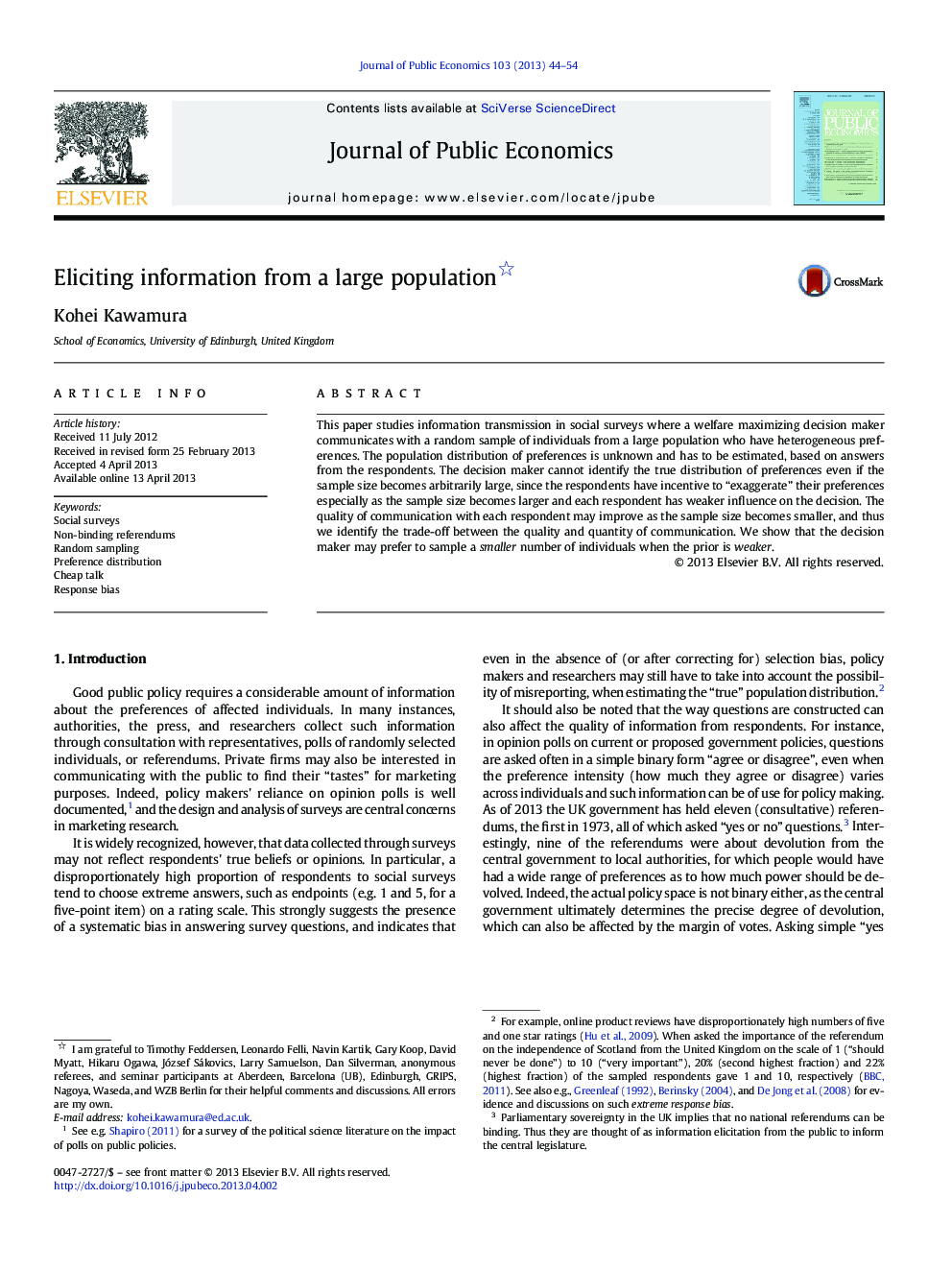| Article ID | Journal | Published Year | Pages | File Type |
|---|---|---|---|---|
| 969839 | Journal of Public Economics | 2013 | 11 Pages |
•A decision maker communicates with a random sample from a population.•Using the information she estimates the population distribution of preferences.•We identify the trade-off between the quantity and quality of communication.•Optimal sample size is smaller when less is known about the population.
This paper studies information transmission in social surveys where a welfare maximizing decision maker communicates with a random sample of individuals from a large population who have heterogeneous preferences. The population distribution of preferences is unknown and has to be estimated, based on answers from the respondents. The decision maker cannot identify the true distribution of preferences even if the sample size becomes arbitrarily large, since the respondents have incentive to “exaggerate” their preferences especially as the sample size becomes larger and each respondent has weaker influence on the decision. The quality of communication with each respondent may improve as the sample size becomes smaller, and thus we identify the trade-off between the quality and quantity of communication. We show that the decision maker may prefer to sample a smaller number of individuals when the prior is weaker.
